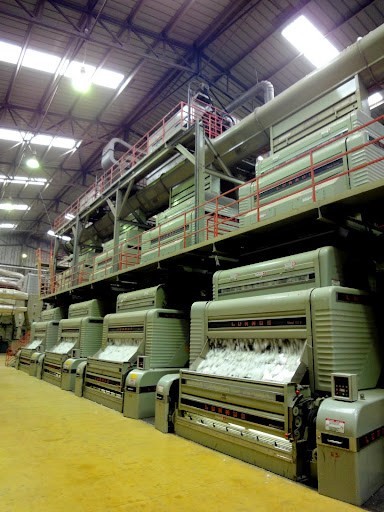In North Xinjiang, new cotton profit margins are large, but sales are unsmooth, while in South Xinjiang and inland, some trading prices have been already lower than the ginning costs. However, seed cotton prices remain high and ginning costs are hard to reduce, how will ginning factories operate later?
In this article, the calculation about prices and profits is based on below:
1. Ginning costs: processing costs are 1,000yuan/mt in Xinjiang, and 550yuan/mt in inland.
2. Ginning yield: ginning yield of seed cotton is 40% in Xinjiang, and 37% in inland.
3. Loss rate of seed cotton: 4% for machine-picked cotton, and 0% for hand-picked cotton.
4. Mainstream price: the market mainstream price before Oct 31. Machine-picked grade-3129 cotton, 28gpt, is at 15,600yuan/mt and for hand-picked ones, prices are at 16,000yuan/mt. In inland, grade-3128 cotton, 28gpt, is at 15,200yuan/mt, gross weight.
5. Theoretical profit=mainstream price- theoretical costs
Xinjiang
Machine-picked seed cotton prices in Xinjiang:

The chart above shows the Xinjiang machine-picked seed cotton prices in 2018/19 season. The prices have stepped downward in general. In early arriving period, the volumes of seed cotton were limited, and prices were steady, after the arrivals increased, prices slipped gradually.

This year, the machine-picked cotton in Xinjiang sees lower costs, and theoretical profit margins are above 1,000yuan/mt. However, sales are unsmooth till now and traders and mills mainly bargain for lower prices.
Hand-picked seed cotton prices in Xinjiang:

In early arriving period, the hand-picked seed cotton from South Xinjiang move up, while later, with the coming machine-picked cotton from North Xinjiang, prices continued falling, but the decrement was limited.

Based on current mainstream prices, Xinjiang hand-picked cotton has seen deficits, and ginners that purchase seed cotton earlier see larger losses. On spot market, even ginners sell with thin profits or even deficits, sales continue to be unfavorable.
Inland

In early arriving period, seed cotton prices in inland were higher about 0.4-0.8yuan/kg than last year, and presented firm, but with the arrivals of Xinjiang cotton, prices continued to edge lower, but the decrement was small, as growers were unwilling to sell when prices decreased.

Profits remain thin for inland ginning factories, and some even have no profits. Besides, the procurement of seed cotton is also slow as growers are unwilling to sell. The situation may continue to end year.
To sum up, new cotton market situation is unfavorable overall. Prices of seed cotton from inland and South Xinjiang are relatively high, but new cotton prices are low, and ginners have thin profits or even deficits, but sales remain unfavorable, and for new cotton in North Xinjiang, profit margins are large with low costs, but ginners are unwilling to cut prices to sell, and sales are unfavorable as well.
Possible development trend in future
Though the market is oversupplied currently, cotton inventory in domestic mills is mainly below three months, at one to two months at most. With time going on, demand will see later. Profits of machine-picked cotton from North Xinjiang are still seen, which may be squeezed later. With high quality and low prices of Xinjiang cotton, competition will be fiercer.
For inland, ginners may accept the lower prices later, and are likely to sell in end year, then ginning costs of cotton will reduce further.
Πηγή: CCFGroup

